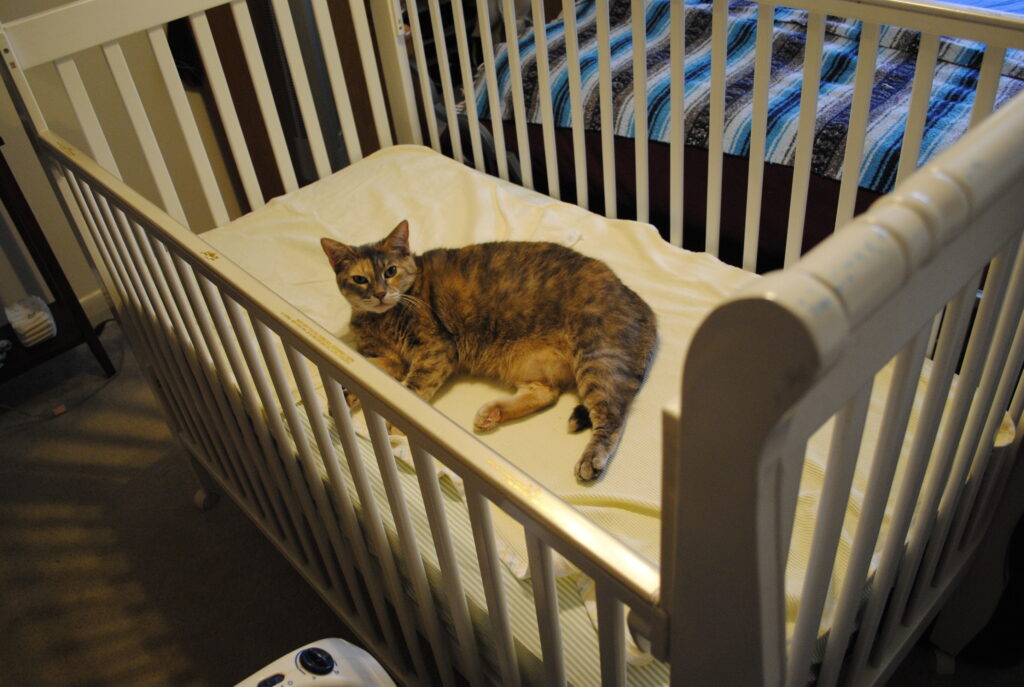Welcome to the purrfectly pawsome world of “Pretty Purrfect Cat Facts”! Whether you’re a seasoned feline fanatic or a newbie cat enthusiast, get ready to dive into a treasure trove of furry fun and feline fascination.

Myth: Cat suck baby breath
The bizarre and seemingly implausible case of a child’s death attributed to a cat’s “breath-sucking” occurred in 1791 in Plymouth, England. A coroner’s inquest was held to determine the cause of death, and the jury rendered a verdict that has since become a subject of historical curiosity and amusement.
The verdict stated that the child had “died by the Visitation of God, by the means of a Cat sucking the Breath out of his Nose and Mouth.” This extraordinary conclusion, while seemingly absurd to modern sensibilities, reflects the prevailing beliefs and superstitions of the time. In the 18th century, cats were often associated with witchcraft and were believed to possess supernatural powers.
It is important to note that this verdict should be viewed within the context of its time. Superstition and fear of the unknown were widespread, and people often attributed mysterious deaths to supernatural causes. In the absence of scientific understanding, such explanations were not uncommon.
While the verdict may seem bizarre to contemporary minds, it offers a fascinating glimpse into the beliefs and fears of a bygone era. It serves as a reminder of how far our understanding of medicine and science has progressed, and how our perceptions of the world have evolved over time.

Myth: Don’t Raise kitten with baby
The superstition of not raising a kitten and a human baby together is a persistent myth that has been passed down through generations. This belief, often rooted in fear and misunderstanding, suggests that cats pose a threat to infants, particularly by “stealing their breath.” This superstition is likely a remnant of historical times when cats were often associated with witchcraft and superstition. Their nocturnal habits and mysterious nature made them subjects of fear and suspicion.
Additionally, in the past, infant mortality rates were high, and people often sought explanations for tragic events, sometimes attributing them to supernatural causes. However, there is no scientific basis for this belief.
Cats are generally gentle creatures that pose no threat to human infants. In fact, many families successfully raise both cats and babies together without any issues.
- It’s important to establish a harmonious relationship between the two, with proper supervision and precautions, such as keeping the baby’s crib out of reach of the cat.
- To dispel this harmful myth, it’s essential to promote responsible pet ownership and educate people about the benefits of having pets in the home. By debunking superstitions and providing accurate information, we can ensure that cats are treated with kindness and respect.

How to introduce baby to cat
The common belief that cats become jealous of newborn infants is a misconception rooted in old wives’ tales and outdated beliefs. While it’s true that a cat’s behavior might change with the arrival of a new baby, this shift is often due to changes in the household routine rather than jealousy. Cats are creatures of habit, and a new baby can disrupt their daily schedule.
They may experience increased noise levels, changes in their feeding and playtime routines, and reduced attention from their human companions. These changes can lead to behavioral adjustments, such as increased vocalization, seeking attention, or even minor acts of mischief. To ensure a smooth transition for both the cat and the baby, it’s important to take steps to maintain a positive environment.
This includes:
- Gradual Introduction: Introduce the cat to the baby gradually, allowing them to observe each other from a distance.
- Maintain Routine: Try to stick to the cat’s regular feeding and playtime schedules as much as possible.
- Provide Positive Reinforcement: Reward the cat for good behavior, such as staying calm around the baby.
- Create Safe Spaces: Provide the cat with quiet, secluded areas where they can retreat if they feel overwhelmed.
- Consult a Veterinarian: If the cat’s behavior becomes problematic, consult with a veterinarian for advice and potential solutions.

By understanding the reasons behind a cat’s potential behavioral changes and taking proactive steps to address them, it’s possible to create a harmonious environment for both the feline and human members of the family